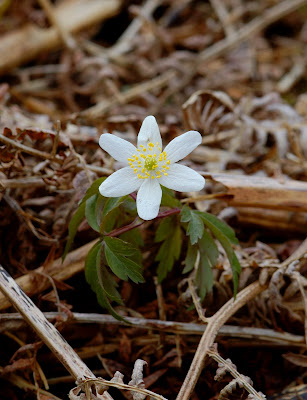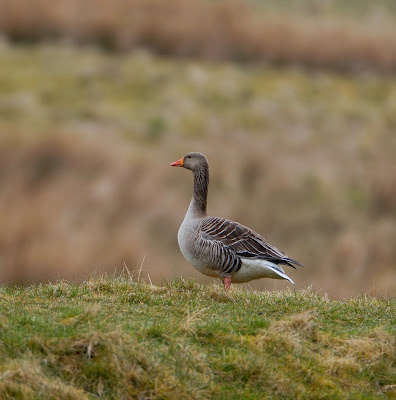Today I walked up to the Jaw Reservoir then to the Kilmannan Reservoir and followed the Audmurroch Burn over to Carbeth. The group of Greylag Geese (Anser anser) were at their usual spot on the Jaw Reservoir.
On the bare hillsides near the Jaw Reservoir, Wood Anemone (Anemone nemorosa) are emerging from the rusty remains of last year's bracken. This plant is considered an Ancient Woodland Indicator because of its strong association with old woodlands and its very slow rate of dispersal (the seeds are rarely viable so the plant spreads mainly by underground roots). All parts of this plant (when fresh) contain the irritant protoanemonin and should not be consumed.
 |
| Wood Anemone (Anemone nemorosa) |
On the grassy embankment between the Cochno and Jaw reservoirs I found a great number of American Mink (Neovison vison) droppings.
Dor Beetles (Geotrupes stercorarius) bury dung on which they lay their eggs. The adults have irridescent bluish undersides and are usually heavily infested with mites (giving them the nickname 'lousy watchmen') - most of which are harmless hitchhikers and not parasites.
 |
| Dor Beetle (Geotrupes stercorarius) |
Over at the Kilmannan Reservoir I found this pair of fiery-eyed toads locked in a tight mating embrace. Only during the breeding season are they active during the day, the rest of the year they prefer land to water, and the cover of darkness.
 |
| Common Toad (Bufo bufo) |






No comments:
Post a Comment